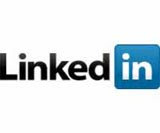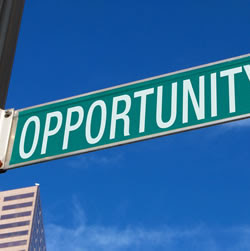
On Wednesday 4th March 2009, I was able to attend the
3rd Annual CIM (Chartered Institute of Marketing) Marketing Communication Lecture. Session proved very useful and a great opportunity to see how three large companies are coping with the current economic climate. Guest speakers included:
- Ryan DeCruz the Brand Content Manager for MediaCom
- Rob Healey the Head of European Marketing for Panasonic System Solutions
- Andy Le Duc the Brand Manager for Thorpe Park
1) The first presentation, was from Ryan DeCruz, the Brand Content Manager for
MediaCom. MediaCom are a currently the biggest media company and has clients such as VW, T-Mobile, Sky, CNN just to name a few. The presentation focused on branded media, something which I have not much knowledge out, therefore it was educational, but at the same time left me wondering on the cost and if there are more cost effective ways to achieve the same results.
Branded content usually takes the form of sponsorship or branded TV. An example for the UK readers is the transmission with T-mobile show on Channel 4, which achieved great success as a TV show, gaining repeats within the channel. As well as branding the show title, brand colours and logo were used within the show. Furthermore a range of other forms of communications were used such as street gigs for T-mobile customers, dedicated sections on social network site Bebo, all these promotions and the TV show generated 25+ articles a week.
Therefore it appears amplification is the key, and that branded media needs to be supported through a selection of other types of marketing, such as websites, PR, in store and packaging promotion to name a few. Within the current climate television stations are crying out for programming, and as a result they are asking brands to help fill/fund main time slots. Traditional television is also facing competition from online web players, which face fewer rules and regulations. “Bebo“ created an exclusive online drama, which companies paid to sponsor and brands were integrated into the story lines. MSN video will be following Bebo’s example and is creating an exclusive sci-fi web show. BMW also created a series of online shows starring actor Clive Owen.
A great example of branded media is a campaign AXE launched in the United States, called the game killers. Make sure you watch this
YouTube video for more information on the whole campaign and how effective branded media can be.
Branded media is all about engagement with your target market, its main purpose it seems is to amplify your brand, rather than just stick to the TV with an advert and hope that something comes from it.
2) The second presentation was from Rob Healey the Head of European Marketing for
Panasonic System Solutions. Rob highlighted how much more challenging Marketing would be in 2009, identifying the following issues:
· Shrinking Economy
· More competitive market –survival of the fittest
· Increased unemployment – Less consumer spend
· Changing exchange rates
· Reduced business confidence due to deflation
· Rise of Protectionism
He also identified how much the marketing world is changing: Highlighting that advertising and sponsorship has the biggest decline, this can be seen with ITV making 600 people unemployed and RBS dropping its sponsorship of sports just this past month alone. With lower budgets, companies are saving on adverts by using previous ads rather than creating new ones, ensuring that they save costs but also continuing to maximise coverage within their media plans.
For a company like Panasonic, which mainly deals with B2B clients, its marketing strategies differ from that of a B2C company. Panasonic focuses heavily on relationship marketing, and to ensure the successful communication of product specifications. This is completed through specific targeted marketing to generate leads. Rob noted that Panasonic are suffering from the economic climate and have implemented regulations within the company to control costs with constant budget reviews. In addition more time is spent on assessing and analysing, ensuring a high ROI. Panasonic are currently only exploring avenues that guarantee strategic development and advancement, resulting in slower reactions to marketing opportunities.
Panasonics key marketing during 2009 is still heavily focused upon building relationships with clients, through exhibition, reassuring consumer have confidence in their products. Telemarketing is also important, capitalising on the contact made at exhibitions. PR and advertising still remain important, however a growth in the use of case studies and press releases will be used due to the assumption that these are stronger then adverts, adverts will remain present to make sure brand is still present in the market. If they disappear this could impact client confidence, as they could presume the brand is in trouble. With that said all these methods have been cut in some volume by Panasonic, see below:
Exhibitions 43%
Advertising 50%
PR 39%
Telemarketing 22%
It was clear from the presentation that ROI was centre of attention more than ever, all marketing activities need to show that they served a purpose and that the decision process has increased immensely. It was also apparent that even large companies such as Panasonic are preparing for a weak year(s) through restructuring to save on costs.
3) The third presentation was from Andy Le Duc, the Brand Manager for Merlin’s UK Theme park
Thorpe Park. Thorpe Park currently position themselves as the nation’s thrill capital, and with over 25 rides and attraction and the launch of the new SAW ride this month continue to be positioned as the UK’s market leader. The parks target market is thrill seekers aged between 16 -24, who are as Andy called it “up for it”. The vision for the company is that they become the No. 1 Entertainment company (currently 2nd after Disney)
A number of key points came out of the presentation regarding the state of the Visitor Attractions market in 2009:
· Induction of positive effect caused by economy – Growth in day trip market
· Record numbers holiday at home
· Merlin showing visitor number growth compared to 2008.
· 16 -24 audience are less exposed to the recession
· Secondary spend at risk, due to customers planning ahead, Thorpe Park has seen food and drink sales dip in early 2009.
· 74% trying to reduce holiday spending, this has resulted in a growth in advance bookings.
· Increased competition for leisure time from other activities.
With these points in mind Thorpe Park have set themselves the following challenges for 2009:
· To sustain growth, whilst ensuring yield is maximised.
· Drive volume through promotion - currently only 6% pay full price.
· Deliver a fool proof media strategy – decline in the use of new ideas.
· Encourage secondary spend
· Focus on customer retention and loyalty schemes
· Maximise on the growth of UK holidays
To reach these targets Thorpe Park are using the following strategic planning tools:
· Balance yield with care promotion
· Grow penetration and catchment area with large scale media
· Destination positioning through the use of packages (long term aim)
· Focus on annual passes – large secondary spend
· Maximise link with Saw brand – merchandise and fast-track passes.
The
Saw ride was a major part of this presentation and it could be viewed that this presentation was largely used as a marketing opportunity. The Saw ride incorporates many firsts for theme park rides, and is the only one of its kind in the world, therefore a major USP for Thorpe Park.
The launch of the ride takes place this Friday (13th March) and has been in planning for 3 years. Thorpe Park has set themselves the following challenge for the launch:
· Balance the Thorpe Park brand and position with the Saw brand
· Drive 2 million visitors through the gates; this is 200k more than in 2008.
· Generate more than 5.4 million pounds worth of revenue.
· Increase yield through promotion.
· Increase penetration - grow age footprint of the park.
· Position as thrill capital
Thorpe Park used a viral campaign, through four videos to generate buzz for the launch and hope to gain record breaking crowds in the Easter holidays. (Already these videos have gained over 200,000 views on
YouTube). Further promotion for the prelaunch took the method of a dedicated micro site, PR in the press popular with target market, as well as through social networks and in park advertising. Also prior to launch a number of TV adverts will be shown during high rated TV shows, the ride will also be feature on television shows. A high impact PR launch is planned across all media, including a radio blitz on Friday 13th. To ensure maximum press coverage, a media day was been held and invitations were sent on Dictaphones as used within the film, with the real voice over actor recording them. To increase secondary spending Thorpe Park has capitalised on the Saw branding creating merchandise to sell at the park.
The launch campaign will come to an end at Halloween when Thorpe Park aim to make the ride an 18 certificate the first in the world. A great venture by Thorpe Park and they will no doubt smash their targeted visitor numbers, although the park does have a risk of negativity within the press for creating such a scary ride aimed at over 18s, all PR is good PR.
Although all three companies differ completely it was interesting to note that the first two were very negative about the economic problems currently affecting the world, but Thorpe Park is benefiting from it. It is stated that within stressful time’s consumer do spend more on leisure to try and forget their troubles. It will be interesting to see how Thorpe Park are doing this time next year when the launch of the Saw is over and which methods they will implement to sustain the visitor numbers achieved with the help of a new ride.






